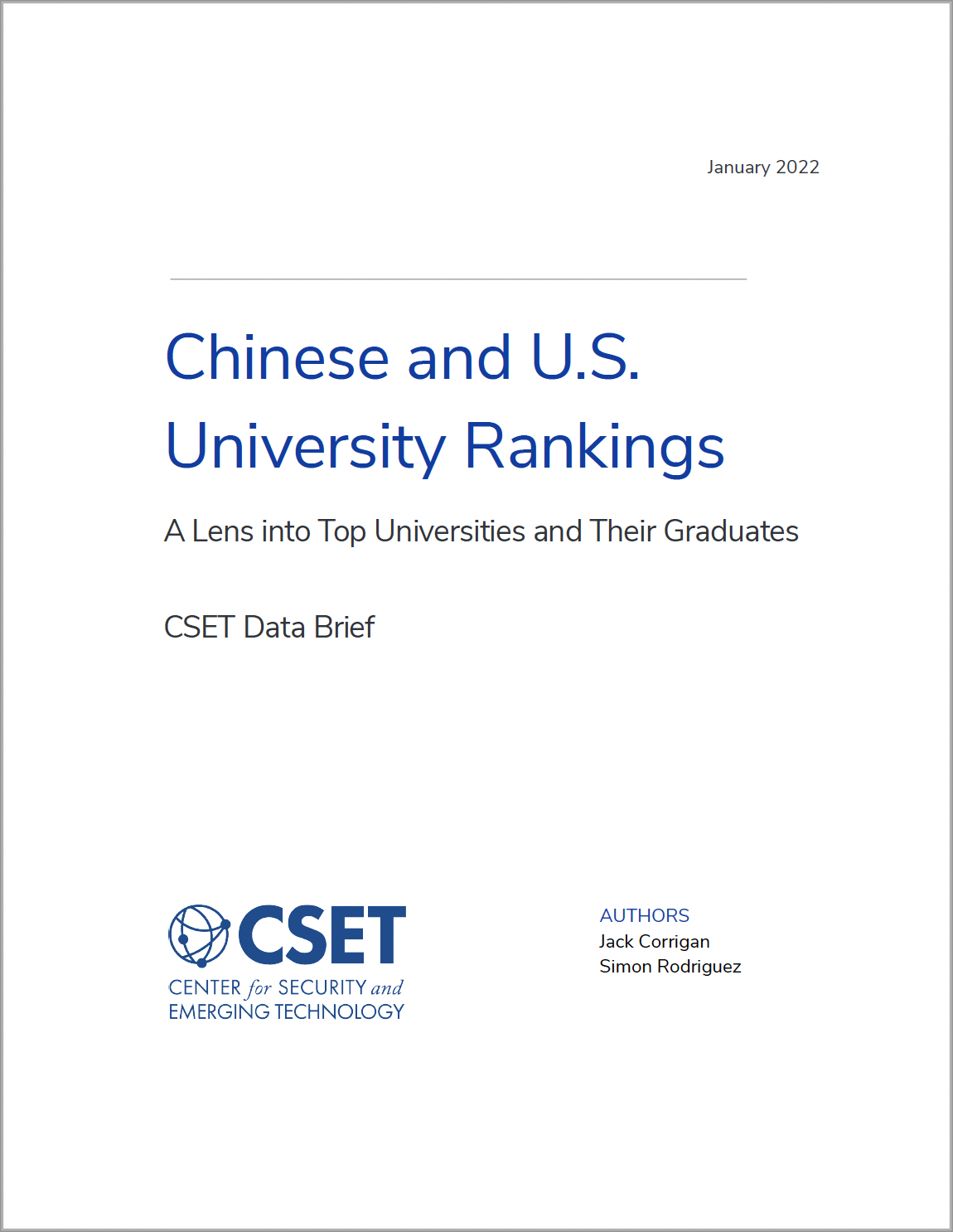Executive Summary
To succeed in emerging industries like artificial intelligence, synthetic biology, and quantum computing, countries must maintain a robust and well-trained workforce. One of the most reliable ways to cultivate that human capital is through a high-quality university system. Top universities play a critical role in building a country’s talent base, providing a valuable education to students at home, and attracting the best and brightest from abroad. The quality of a country’s university system can therefore be a useful metric when gauging the strength of its talent pipeline—the more world-class universities a nation has, the more world-class human capital it can develop.
This brief assesses the quality of universities in China and the United States based on their performance in two well-regarded rankings of global universities: the Academic Ranking of World Universities (ARWU) and the QS World University Rankings (QS). We find that:
- Chinese universities have made significant gains in the global rankings. Between 2010 and 2020, the number of Chinese universities in the top 500 on at least one global ranking more than tripled (from 23 to 71), while the number that appeared on both rankings rose from 9 to 26. Chinese universities have also steadily moved up the rankings over time.
- Improvements in Chinese university rankings appear to be driven largely by increases in research productivity. These gains coincide with a series of state-sponsored higher education initiatives that focus primarily on improving the quantity and quality of academic research in China.
- The number of ranked U.S. universities fell during the past decade. Between 2010 and 2020, the number of U.S. universities that appeared in the top 500 on at least one global ranking dropped from 160 to 137, while the number that appeared on both rankings fell from 102 to 82. Other countries and regions have experienced similar, and in some cases greater, proportional declines in aggregate university rankings during the past decade.
- The decrease in the number of ranked U.S. universities does not appear to coincide with other indicators of declining educational quality. However, available data suggests that universities in other countries (namely China) have significantly improved in metrics such as research productivity relative to their U.S. counterparts.
- Ranked U.S. universities produce more PhDs and bachelor’s graduates than ranked Chinese universities. Still, more than half of China’s PhDs study at ranked universities. In the United States, ranked universities also play an outsized role in the STEM talent pipeline, accounting for about 80 percent of STEM PhDs and 44 percent of STEM bachelor’s graduates. Due to data availability issues, the share of Chinese STEM graduates earning degrees from ranked universities could not be determined.
There remain many unanswered questions regarding the quality of elite universities and their graduates. Additional research into the quality of undergraduate instruction and doctoral research, and the popularity of STEM at China’s top universities would shed more light on the strengths and weaknesses of the country’s talent pipeline. Furthermore, examining the short- and long-term labor market outcomes of graduates from top universities in the United States and China would provide a better understanding of each country’s capacity to use the human capital at its disposal, and promote more nuanced discussions around the international competition for talent.
